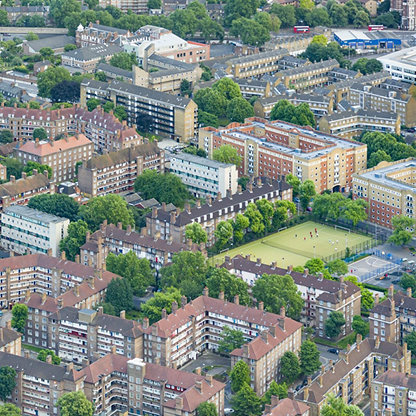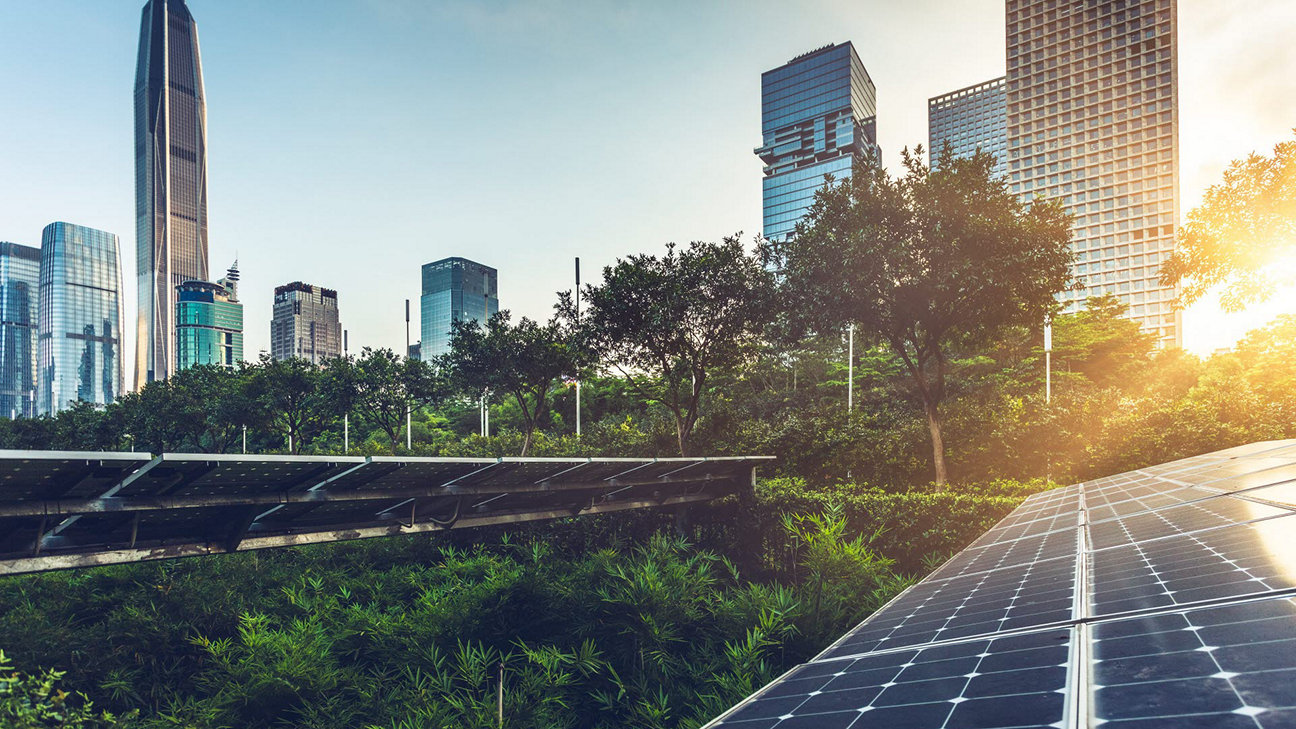What are the key drivers of performance in Asia Pacific’s commercial real estate markets? In this webinar, a panel of experts discussed the key trends, challenges, and outlook for commercial real estate across the region.
World Built Environment Forum
Optimism about Asia-Pacific markets persist, driven by China’s turn around
We’re seeing a general recovery of the APAC commercial real estate markets, says Donglai Luo, Senior Economist at RICS. This is mostly being led by the reopening of China and Hong Kong after zero-covid policies. Sentiment among both investors and occupiers in the region has been the highest since Q2 2019. India and Singapore lie on the stronger end of this spectrum, while Australia and Japan reflect comparatively weaker sentiment.
Dr Megan Walters FRICS is Global Head of Research, PIMCO Prime Real Estate. She explains that economists are predicting a mild recession for the US, which will probably have a similar effect into Europe. The bright spot in all of this is Asia, where there is still growth, rising demographics, economic activity, and lower inflation. This means the central banks in Asia may be able to limit their interest rate rises, reach a peak, or start a rate cutting cycle earlier than you might see in other global regions.
Greg Hyland is head of Capital Markets, Asia Pacific, for CBRE. As he states, the economies in Asia are operating at different speeds. The recovery in China is happening, but there’s still caution, and people are looking to see how the performance will be during the first half of 2023. ‘If those indicators continue to remain positive, we expect volumes to come back quite strongly in China’, he says. ‘Japan continues to be a standout performer over the last 4-5 years: transaction volumes remain robust, pricing remains firm, and we don’t see that situation changing. I think if you look at some of the developed Asian markets, the one that has suffered the most dislocation has been South Korea, where interest rates have moved quite considerably, and we’ve seen a material drop off in transaction volumes.’
Transaction volumes have also dropped off materially in Australia, explains Greg. ‘Interestingly, we’re starting to get price discovery in some of the asset classes, particularly around office, where we’ve had the most dislocation. The key risk is the Reserve Bank of Australia’s policy settings that appear to be approaching the end of the tightening cycle. If this proves to be accurate, we will start to see a recovery in volumes in the second half of 2023.’
Inflation is a key global risk to watch in the second half of 2023
Global inflation has been 8.7% and is likely to trend to around 7% this year, explains Megan. Expectations from the IMF indicate this isn’t expected to reduce to anything near ‘normal’ until around 2025. There are several reasons for this, Megan says. Supply chain disruptions after the pandemic are one factor. Another is monetary stimulus – particularly in the US, while a final contributor is energy pricing due to energy shortages from the war in Ukraine.
India’s standout growth
Donglai explains: ‘looking at our respondents’ perceptions of their local markets, we see that in India and Singapore, more respondents perceive the markets to be in an upturn or peak.’ Megan agrees: ‘the long-term average for global growth is 3.1%, so anything below that is going to feel worse. However, with China opening back up, the IMF expects GDP to be at about 5% this year, which will help the region. Places like Singapore and Australia did well last year. On IMF numbers, GDP growth in Australia was 3.7% last year and Singapore 3.6%, but both are expected to be more around 1.6-7% growth range. The big standout is India, with 6.8% growth last year and 5.9% expected this year.’
India has just come out of a record high year, says Suvishesh Valsan, Director – India Research at Cushman & Wakefield. ‘There was 72 million square feet of gross lease volume, of which net absorption was close to 37 million square feet – so these are historically high volumes. We saw that momentum carrying on in the first quarter of 2023, but given the external environment, we are seeing optimism with caution among occupier sentiment’, he says.
There has been some slack in investor sentiment in the last 4-5 months: from quarterly average private equity in-flows into India dropping from USD 1.5 bn to USD 1.1 bn, explains Suvishesh. Besides a relatively weak investor sentiment globally, demand-supply mismatch across quality assets is also contributing to limited volume, he explains. ‘Investors are looking for good quality assets, and with many of these already taken, I think it will be important to see what future supply holds in terms of office, warehousing, and retail.’
We are seeing 180 square feet of new supply coming through in India over the next 3-4 years, says Suvishesh. ‘A lot of transformation is happening from the unorganised space to the organised space. A good chunk of the relevant stock is owned by listed developers or financial institutions. Going forward, these are the institutions that will have the power to deliver on time and to deliver differentiated product offerings.‘
Asset polarisation around ESG credentials is expected in the future
We’re seeing an increasing share of buildings having green certifications - LEED or IGBC certified buildings, particularly in leading cities such as Mumbai, Bangalore, and Delhi, explains Suvishesh. Going forward, we’re looking at more relevant office supply coming through. As most occupiers have net zero targets coming in early, some at the end of this decade, and we believe the built environment will have to suit these needs very soon. We’ll start to see limited vacancy and higher premium in rentals for building with green certifications, he says.
Megan agrees: ‘Many investors and occupiers are part of a net zero carbon movement. For investors this is a formalised group called the Net Zero Asset Owners Alliance, with about USD 10.7 trillion in assets under management - a sizable group. People are committed to net zero – less so in America, more so in Europe and about 50/50 in APAC.’
“Investors and owners, particularly the larger multinationals, are increasingly adopting a zero-carbon stance. This will affect both the allocation of incremental investment dollars, and occupier demand for buildings that can meet a carbon zero pathway.”
Greg Hyland
head of Capital Markets, Asia Pacific, for CBRE
It’s a mixed bag in Asia in terms of adoption, says Greg, but from our perspective, everyone will end up heading in that direction. Investors and owners, particularly the larger multinationals, are increasingly adopting a zero-carbon stance. This will affect both the allocation of incremental investment dollars, and occupier demand for buildings that can meet a carbon zero pathway. ‘In a lot of Asian markets, the stock is brand new’, he states, ‘so it is already adopting and got the certifications, so it’s different from cities like London with old stock that requires investment to get to new standards’.
High density cities are experiencing the highest return to the office
In general, high-density cities tend to have people go to the office, explains Megan. In these cities there is already well utilised office space, apartment sizes tend to be smaller and economically efficient. Shanghai, Singapore, Hong Kong and Tokyo - they all have a population density of about 10-12 thousand people per square km, and 80-90% are back in the office. That will drive demand for office in the region, meaning Asia Pacific could present attractive opportunities for investors interested in office markets, she says.
Greg would agree: ‘everything Singapore and north are pretty much back to pre-covid levels of utilisation. Australia is probably somewhere in a halfway house between Europe and Asia. Tenants are gravitating towards those buildings that are highly amenitised, highly connected to transportation, and offer a degree of flexibility. If you have a large enough development that offers an element of a fixed lease and some flexible space, and is highly amenitised, well connected – that to us feels like the office that will continue to perform.’
“Mumbai is a very high-density city, so you will see that the return to office is very high – upwards of 80%, similarly in Bengaluru, and Delhi.”
Suvishesh Valsan
Director, India Research at Cushman & Wakefield
The picture is more mixed in India, explains Suvishesh. Mumbai is a very high-density city, so you will see that the return to office is very high – upwards of 80%, similarly in Bengaluru, and Delhi. In depends on which sector we are talking about – Mumbai being the financial capital, with large multi-national banks and professional services companies with headquarters in Mumbai, that’s also what’s driving a high level of return to office. Most of the multi-national technology companies are in Bengaluru, and there we’ve seen the return to the office be very gradual, although this is increasing.
A new cycle for CRE in Asia Pacific?
How is the Commercial Real Estate market shaping up in the face of the evolving economic environment? We present the results of the latest RICS Global Commercial Property Monitor and discuss with leading participants in the sector their insights on the opportunities for the rest of the year as well as the potential risks to the property market.




